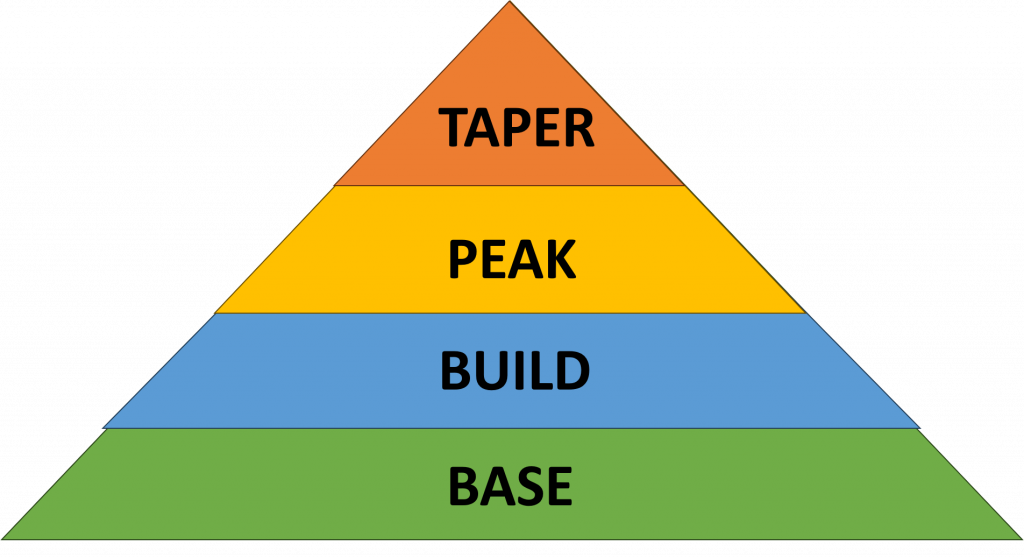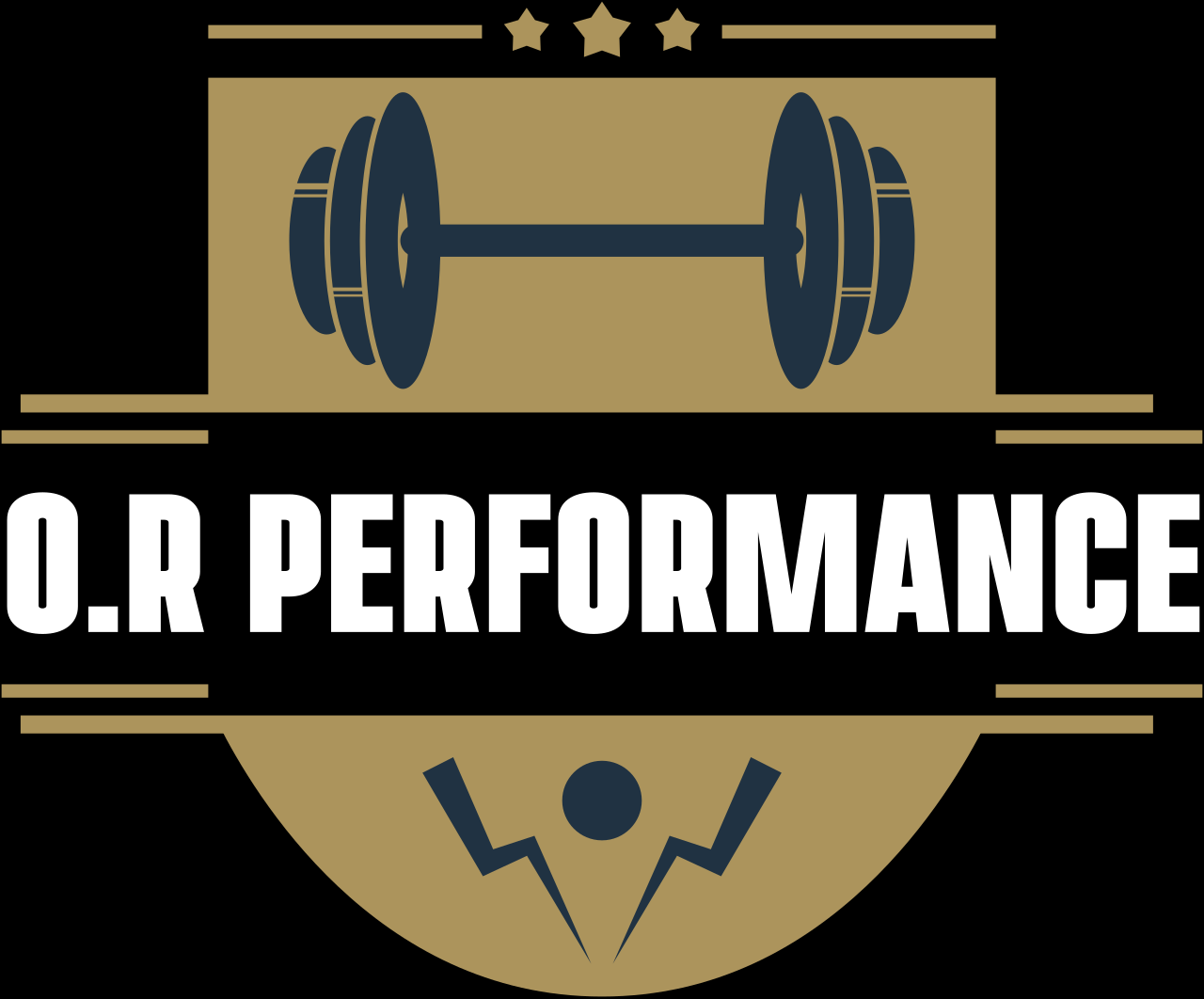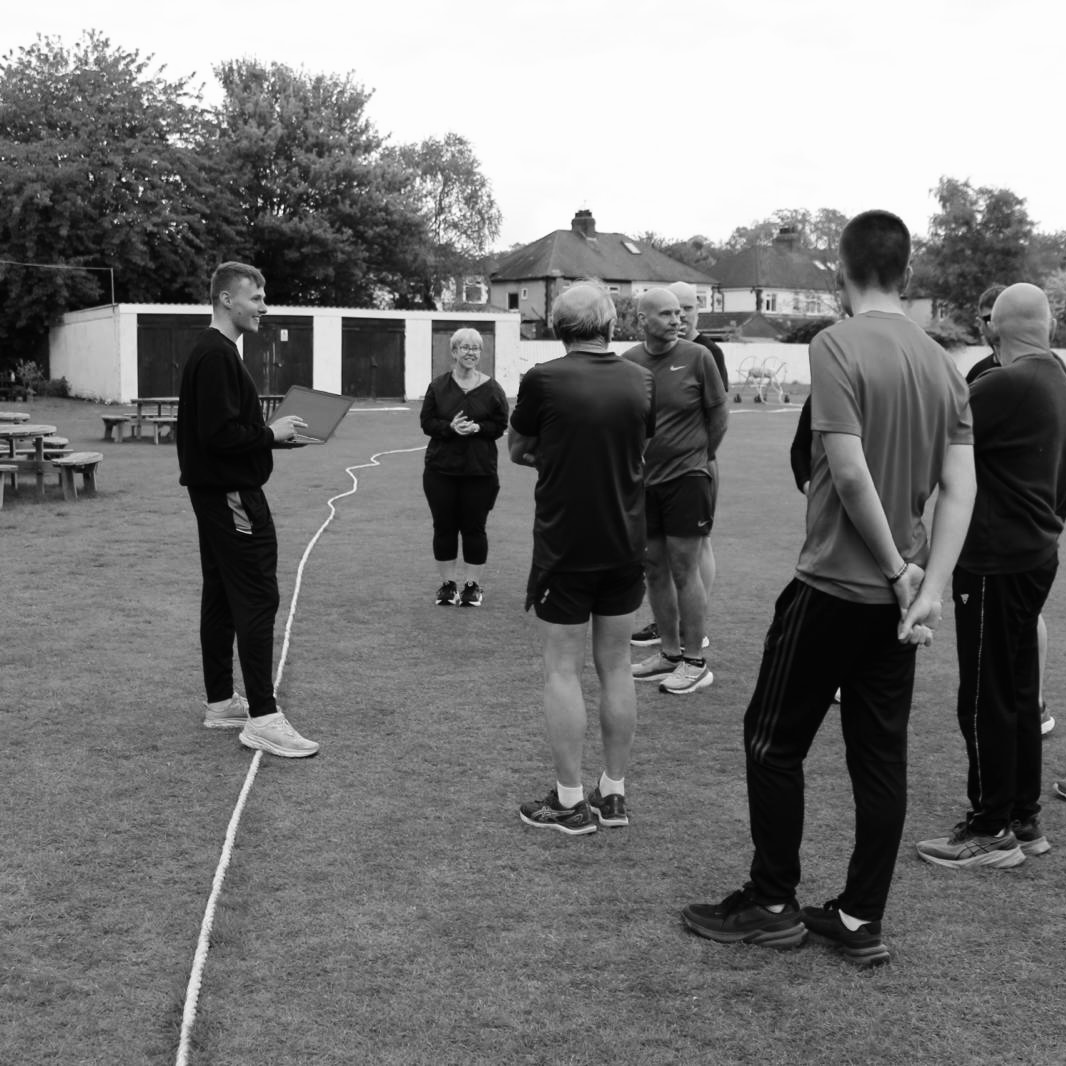Your cart is currently empty!
The definition of periodisation is ‘the division of time into periods’. For training you may be well aware of focusing on different outcomes at different times. For example you may have heard of ‘base-building’, ‘peaking’ and ‘tapering’. These are all sections that you might go through if you were following a well-written training programme.
The idea with periodisation is to train different qualities at different times such as your aerobic base or your anaerobic capacity. The aim being that if you put all your proverbial eggs into one proverbial basket, you get a better quality of training. This is mostly because training one physical quality before moving a second quality may actually help train the second quality better.
If you’re following a training programme, periodisation should be looked after by your coach or wherever you got your training programme from. But the periodisation of your strength training is just as important as your run periodisation. Doing the right strength training at the right time is so important to avoid excess fatigue and soreness and more importantly, actually prevent injuries.
What’s the aim of periodisation?
The aim of structuring your training is to maximise your training efficiency. Efficient training means that you get more improvement in your running for minimum effort and injury risk. Periodisation strategies such as linear periodisation are all about structuring your training in a manageable way. This allows the development of different physical qualities that are all going to help your running.
Periodisation also enables you to hit your peak physical performance when you most need it. Through having your training mapped out you know when your key dates are. From there you’ll already know what you need to work on but you can plan an effective period of time to work on your weaknesses. And when you come to the end of your training you can understand exactly when you need to recover or taper to maximise the chances of hitting your goals on race day.
To help grasp this I’ll go through traditional linear periodisation and what strength training will go best with your run training in each of these phases.
Linear Periodisation
Linear periodisation is a fancy way of saying that your training volume starts quite high and gradually decreases, while your training intensity starts quite low and gradually increases. This has to happen to minimise injury risk – it is hard to maintain a high volume of high-intensity running. There will be different stages that happen during this though.

You may have seen a diagram like the one above describing these phases. I’ll quickly go through each one and what they mean.
BASE
This most means ‘aerobic base building’. I said above that linear periodisation starts with high volume and low intensity. Well the base phase is exactly that – lots of relatively ‘easy’ running using mainly your aerobic energy system. This is a big stimulus to encourage your aerobic energy system to be able to provide more energy. You may also end up doing a few long interval sessions at threshold pace. The main method of overload here is through adding more training volume, not intensity.
BUILD
Again the name of the phase describes what it is. Building on phase 1. Intensity is slightly increased, you might end up transitioning some of your interval runs to race pace while other runs may swap to HIIT workouts. Typically your volume will drop as you enter this phase. By the end of the phase however you will end up doing your highest volume or mileage in your training programme.
PEAK
This is where your training load will be at it’s highest. Load is simply volume x intensity. Your volume will be cut back a little bit again to allow for more intense runs that will focus a lot more on your race simulation. Some workouts will also focus on your V02max building making them more anaerobic in nature. Progressions in this phase can either be via volume or intensity.
TAPER
This is where your volume is gradually reduced. There are different kinds of taper such as an exponential taper where the amount your volume is reduced increases week by week or step tapers where it stays consistent. The key thing here though is that your intensity is maintained. This will help keep you sharp before your race while also promoting recovery.
What does this mean for strength training?
Because there are different qualities being trained in each phase, your strength training needs to work with your run training, not against it. Concurrent training (strength and endurance) limits the gains in strength you might be able to get. This is mainly because signals in your body transmitted after a run inhibit the release of signals after a strength training session. In addition, certain qualities you want to train in the gym can impact the quality of your run sessions. So how should you strength train to get around this? Before we get into it you can get properly periodised strength training plans to go alongside your run training through our coaching services.
BASE
With your base training have a relatively low intensity, this is your perfect time to build muscle strength and hypertrophy. Yes muscle hypertrophy is an increase in size of muscle and runners don’t need to be big but it will allow for a better quality of muscle to be built, especially if you’re training your weaknesses. Muscle hypertrophy matters a lot when it comes to building strength as well, but don’t worry you won’t look like a bodybuilder after this phase. Aim for compound and isolation exercises for 8-12 repetitions.
While your run training is going to inhibit the amount of strength you’re able to build here, having heavy strength training here limits the impact of running faster on sore legs and also your strength training down the line will work much better with your run training and needs higher levels of strength to develop it properly.
BUILD
With an increased intensity in this phase you’ll need to pull back on some of the muscle hypertrophy work. This is what will make you feel most sore so it makes sense to cut it back when adding in some more intense run sessions. You can replace it with more muscle strength work at reduced repetitions ie. 4-8. Alternatively you can introduce some power and plyometrics in preparation for later training. This can use exercises such as loaded jumps, bodyweight jumps like broad jumps or weightlifting exercises where the focus is on speed of movement rather than lifting heavy. In my opinion, moving from slowest movements through to faster movements would be a good progression, for example start jumping with weight before with just your bodyweight
PEAK
With this being your highest training load you should aim to maintain strength here rather than continue to build it. This will reduce the fatigue you get from your strength training. Instead you can focus more on plyometrics and strength-endurance. These will go well with your run training as you have built the base needed to improve them already. Plus they aren’t going to make you feel as sore and impact your faster running in this phase.
TAPER
Exactly the same as what you would do with your run plan. Reduce the volume gradually but keep the intensity. You don’t want to add anything new into your training here as that will mean extra fatigue at a time you’re trying to recover.
Summary
Periodisation is a method of splitting your training up into blocks. Having periodised training can help you train more efficiently by training many different qualities that impact later training. It can also help you achieve your peak performance when you most need it.
Linear periodisation is a method of periodisation that includes four phases – base, build, peak and taper. These 4 phases gradually progress from low intensity and high volume, to high intensity and low volume. Each of the 4 phases will look slightly different in terms of the training done in each of them.
Your strength training can also follow linear periodisation in line with your running. The 4 phases progress in a similar way but instead the focus will initially be on strength and a little bit of muscle tone before moving towards speed and power or strength endurance, depending on your race distance or your goals. By periodising your strength training like your run training you maximise the injury prevention and performance benefits to your running.


Leave a Reply